Humanity has been advancing into space for six decades ever since the Sputnik launch in 1957. But what have we really achieved?
Let’s take a look at 10 breakthroughs in space exploration that might have changed the world.
1. Chang’e 5 Moon Landing
The Chang’e 5, named after the moon goddess (嫦娥) was a robotic space mission of the Chinese Lunar Exploration program to return lunar samples, including soils and rocks from the moon back to Earth. This was China’s first sample return mission and the first lunar sample return mission since the Luna 24 (Soviet Union) in 1976.
The spacecraft made its landing on the 1st of December 2020 and returned to Earth with lunar samples on 16 Dec 2020.
Aside from it all, what made the Chang’e 5 really special was the introduction of the mission’s autonomous nature. Everything, including the lunar orbit docking, sampling, and sample transfer between different spacecraft modules was fully automated.
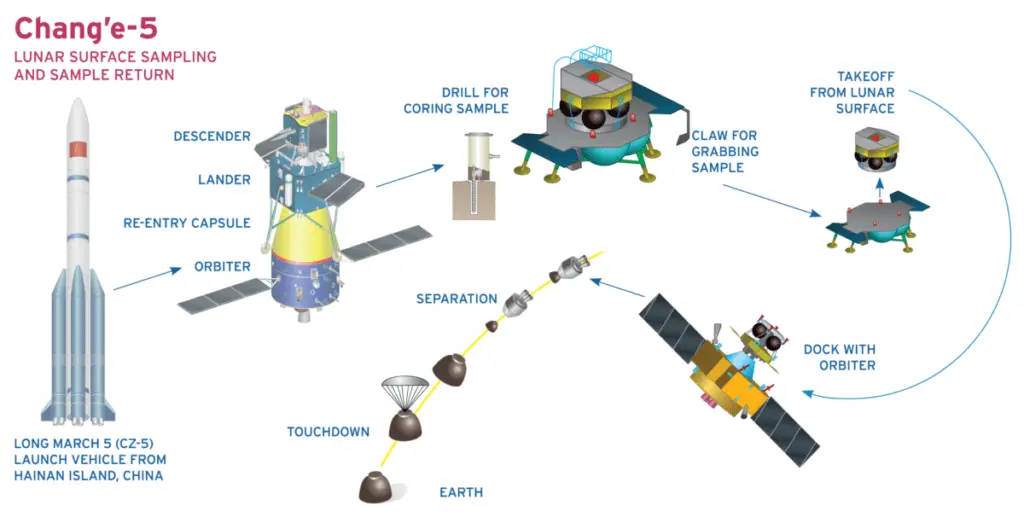
Technologies the lander carried onboard included a landing and panoramic camera, spectrometer (to determine mineral composition), soil-gas and composition analytical instrument, sampling sectional thermo-detector, and ground-penetrating radar.
After making its landing near Mons Rumker in Oceanus Procellarum (Ocean of Storms), which was an isolated volcanic formation located at the northwest part of the Moon’s near side; the lander utilized a robotic arm, rotary-percussive drill, scoop, and separation tubes to acquire and isolate the individual samples.
Although, these samples differ as the 1.731 kilograms of material was collected in a geologically younger area of the moon (1.21 billion years old), compared to what was returned by the US and Soviet Union (3.1-4.4 billion years old). This was completed on purpose as younger samples could reveal new information about the moon’s history, as well as help mankind understand the moon’s fundamental characteristics and provide the basis for future survey missions. These samples could also help us verify the hypothesis that some areas of the moon had experienced late-stage volcanism, and that if it did, why it had occured.
The Chang’e 5, after completing its mission to return lunar samples is now heading for a gravitationally stable point in space – the Sun-Earth Lagrange point, to observe the sun, the local environment, and perform operational tasks. (SpaceNews)
2. Discovery of Exoplanets
Exoplanets, to put simply are planets that exist outside of our solar system. They are unique in that they have local counterparts – the solar system planets, available for us to study from. (1)
To date, more than 4000 exoplanets have been confirmed. And since the first discovery, the number of known exoplanets has doubled approximately every 27 months. (NASA)
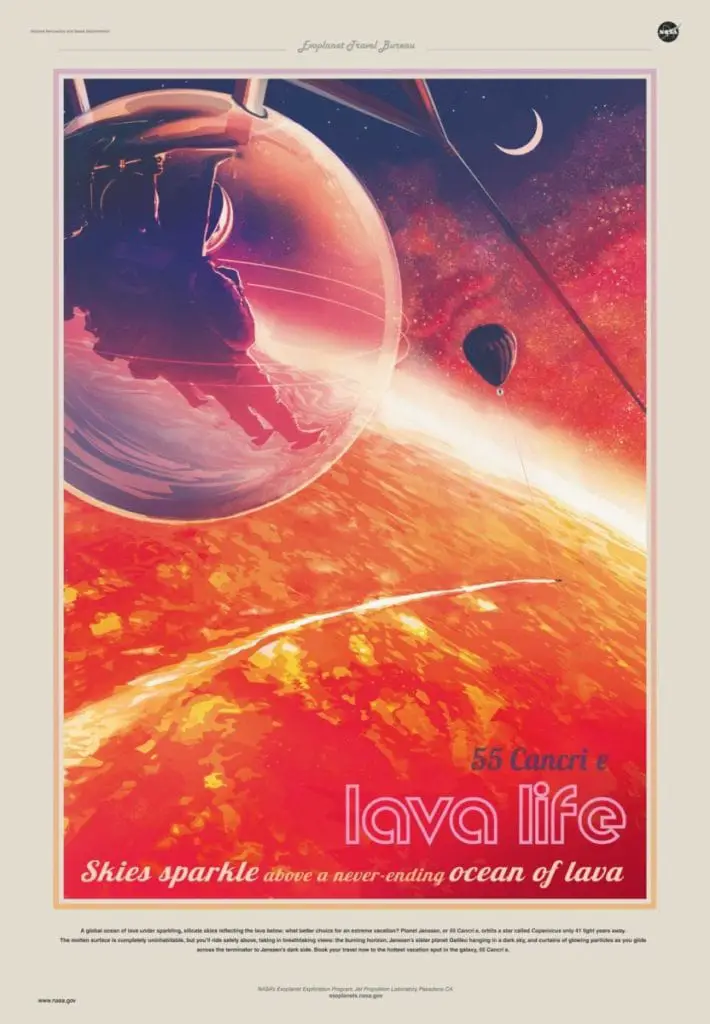
Image by NASA-JPL/Caltech
Such search and discoveries are imperative as it includes the promise to eventually find and identify habitable worlds (2). The diversity of planets in terms of their mass, orbit, or host star type give hope that planets very different from Earth may have the right conditions for life, and that humanity is not alone in the universe.
To understand how we discovered the existence of exoplanets, we first have to grasp the concept of a neutron star. In short, neutron stars are the second densest type of object in the universe, and they are formed when a giant star explode outwards due to the collapse of its core. Some of these neutron stars emit pulses in regular intervals in the form of radio frequencies, which are sometimes known as pulsars.
In 1992, we confirmed the first discovery of exoplanets with the observation of the neutron star – pulsar PSR B1257+12. The astronomers Aleksander Wolszczan and Dale Frail counted the pulses emitted by the neutron star at very irregular intervals, to which they later understood and confirmed it to be the effect of two rotating planets that interfered with the radio frequencies.
3. Discovery of Gravitational Waves
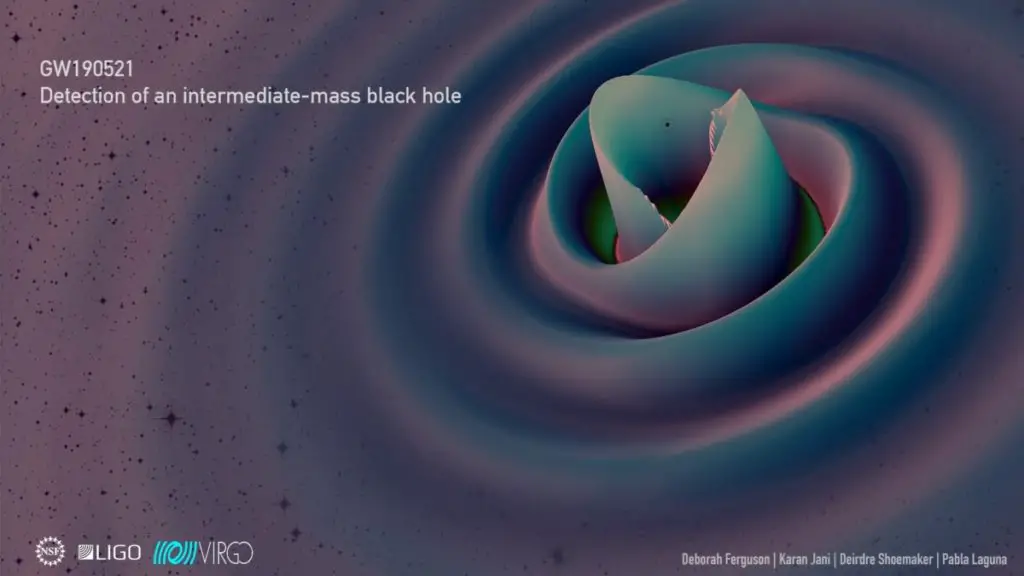
In his general theory of relativity, Albert Einstein predicted the existence of gravitational waves more than 100 years ago in 1916.
Gravitational waves are ‘ripples’ in spacetime caused by some of the most violent and energetic processes in the universe. “Einstein’s mathematics showed that massive accelerating objects (neutron stars or black holes orbiting each other) would disrupt space-time such that ‘waves’ of undulating space-time would propagate in all directions from the source.” (LIGO)
However, this was all speculative theory until 14 September 2015, when LIGO (Laser Interferometer Gravitational-Wave Observatory) physically sensed such ‘ripples’ generated by two colliding black holes 1.3 billion years away.
The detection of gravitational waves not only allowed us to observe the universe in ways never before, but we might also be able to discover clues to the nature of gravity itself. Not to mention getting a glimpse of data that could give us information on events that occurred at the beginning of the universe!
To achieve the feat that they did, LIGO had to utilize a (really big) interferometer – an investigative tool that merges two or more sources of light to create an interference pattern. The detection of gravitational waves had to be measured at a change in distance 10,000 times smaller than a proton. Which meant an interferometer with arms at a length of at least 4 km (2.5mi) had to be built.
Such technologies including the “Fabry Perot Cavities” for ‘signal recycling’ had to be utilized, as an interferometer with arms longer than 4 km was constrained by location and just not physically feasible. Mirrors for laser power recycling and vibration dampening mechanisms were also used to enhance the signals received by a photodetector to home in on vibrations that could be caused by gravitational waves.
4. Discovery of Proxima Centauri
Discovered in 1915 by the Scottish astronomer Robert Innes, Proxima Centauri is to date the closest known star to the Sun at approximately 4.2465 light-years away. The Latin name of the star is derived from its location in the southern constellation of Centaurus, meaning the “nearest of Centaurus”. In comparison, Proxima Centauri is a red dwarf star at an eighth of the Sun’s mass and more than 2000 K cooler (no pun intended).
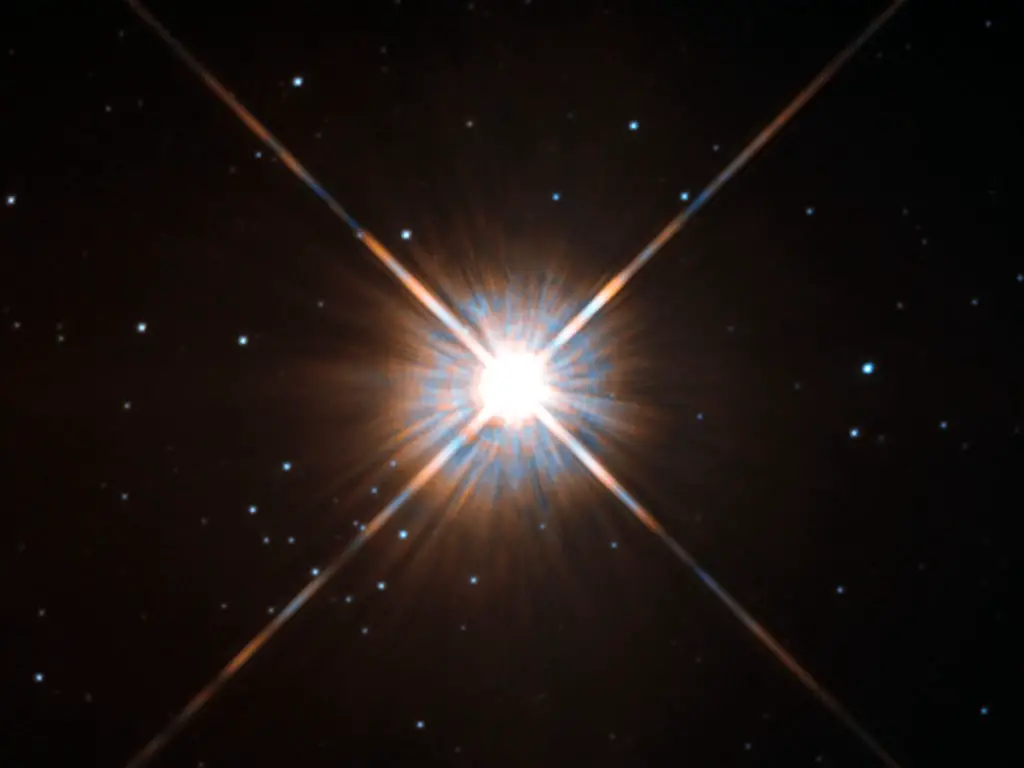
Image by ESA/Hubble & NASA
Proxima Centauri aka Alpha Centauri C is part of the Alpha Centauri triple star system, which is also the closest planetary system to our solar system.
Why was the discovery of Proxima Centauri so world-changing? Well, the answer is related to the super-Earth – Proxima Centauri b (PCb), a planet that orbits Proxima Centauri within its habitable zone – the range of distance from a star where liquid water might pool on the surface of an orbiting planet (NASA).
Such a discovery was significant as it is the closest star to the Sun. Despite being 4 light-years away, which would still take the Voyager 73,000 years to reach as we are limited by the technology of our time, plans are already underway for exploration missions to PCb.
5. Ocean on Europa
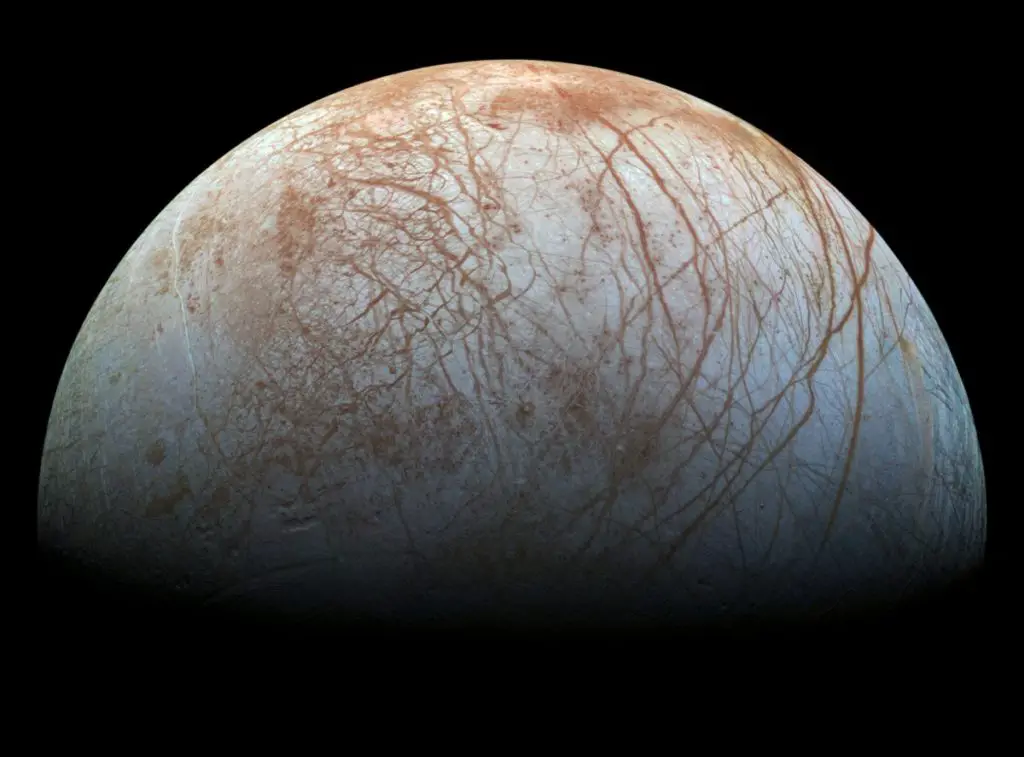
With an iron core and a rocky mantle, it is thought that Jupiter’s Satellite (moon) Europa currently possesses a global subsurface ocean. This body of water lies below a shell of ice approximately 10-15 miles (15-25 km) thick and has an estimated depth of 40-100 miles (60-150 km).
Europa, similar to its other sizeable Galilean satellite counterparts (Io, Ganymede, and Callisto) is likely formed from the leftover material of Jupiter’s creation after it has condensed from the initial cloud of gas and dust surrounding the Sun. The Galilean satellites are also often called “mini solar systems” as their formation is similar to the creation of the solar system planets from the leftovers of the Sun.
The geological observation and data provided by the Voyagers and Galileo imply that a warm and mobile material, perhaps liquid water lay at shallow depth within the subsurface. “It has been considered for many years that a liquid water ocean within an icy satellite, specifically Europa, might possibly support life.” (3)
This prospect is even more intriguing as life on Earth may have arisen from hydrothermal systems on the ocean floor, and that photosynthesis may be able to occur in absence of sunlight, which instead is powered by dim near-infrared light of the hydrothermal vents. (3)
6. Discovery of the Heliopause
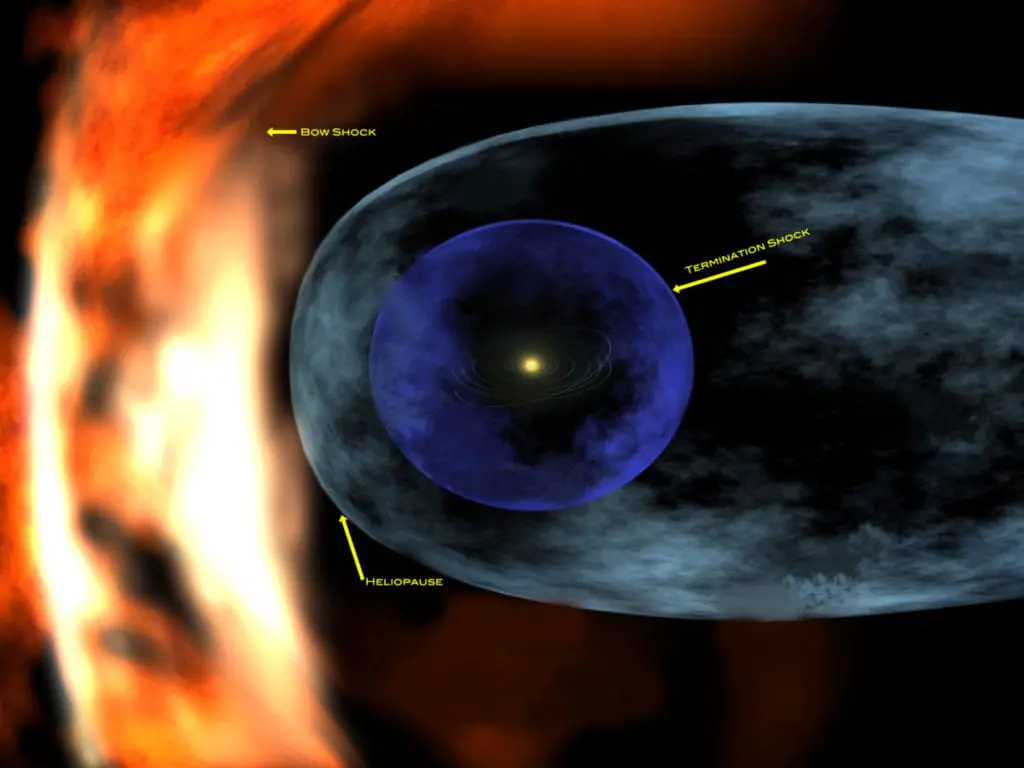
The heliosphere – described by NASA as a giant bubble around the sun and its planets, is formed by a constant flow of charged particles called SolarWinds. This magnetized bubble of hot plasma eventually encounters the charged particles and magnetic field in the interstellar gas, which creates the boundary between our solar system and interstellar space called the heliopause.
This “bubble” acts as a shield to protect the planets from galactic cosmic radiation and has a crucial effect on the formation, evolution, and destiny of planetary systems. (NASA)
The study of the heliosphere and heliopause help us understand important ideas, such as “how solar wind behaves near the earth; what causes and sustains magnetic and electric fields around other planets; how the heliosphere interacts with the interstellar medium; what do the boundaries of the heliosphere look like; what is the origin and evolution of the solar wind and interstellar cosmic rays; and what contributes to the habitability of exoplanets.” (NASA)
Direct evidence for the heliopause was retrieved by Voyager 1 and 2 nearly 15 years after they left home. Generally, the radio signals we would receive from such charged particles from the Sun are of frequencies so low that they can’t be detected from Earth. However, in May and June of 1992, the Sun experienced a period of intense solar activity, such that when it arrived at the heliopause, it interacted so violently with the interstellar plasma that it produced radio signals we could detect. (JPL)
7. First Photo of a Black Hole
What we first have to understand is in theory how impossible this feat is made out to be. Black holes are an existence where nothing, not even light can escape. And without light, what hope is there of seeing anything from a photo?
But humanity did it. A team formed to take on this challenge by creating a network of telescopes known as the Event Horizon Telescopes (EHT). They set out to capture an image of a black hole through the use of a technique known as Very Long Baseline Interferometry (VLBI).
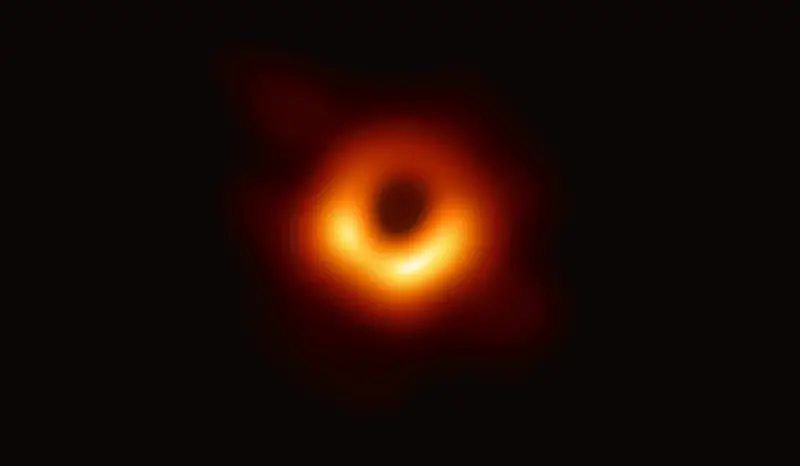
The image of the supermassive black hole Messier 87 (M87) was captured by photographing its shadow cast against a bright backdrop, which was created by the hot disk of materials that encircles the black hole and shines bright.
This technique synchronized telescopes all around the world to focus on the same object at the same time to act as a giant virtual telescope. The farther apart these telescopes are, the greater their aperture, and the greater their ability to gather light to produce a higher resolution. Two of the EHT stations were stationed at the South Pole and Spain, which created an aperture that was nearly the same diameter as Earth! The result of such distance was a degree of precision 4000x better at resolving objects than the Hubble Space Telescope.
The data from observation offered us insight into not only physics but allowed us to test Einstein’s theory of general relativity for black holes and other regions of dense matter. We were also able to study the formation and behavior of black hole structures, as well as mechanisms at which black holes emit enormous jets of particles that travel at near light-speeds. (JPL)
8. Stars Orbiting the Milky Way Black Hole
In the film ‘Interstellar’, the planets Cooper (Matthew McConaughey) visited were all in orbit of the black hole “Gargantua”. This proximity to the black hole caused extreme time dilation, where one hour equated to seven years on Earth.
We might think of this to be science fiction, but in reality, there exist a supermassive black hole known as “Sagittarius A” lurking in the central region of the Milky Way Galaxy, with almost 30 confirmed stars in orbit.
Discovered by the ESO (European Organization for Astronomical Research in the Southern Hemisphere) after a 26-year-long observation campaign, the orbits of these stars were found to precisely match the motion predicted by general relativity. This strengthened the evidence that “Sagittarius A must be a supermassive black hole that’s 4 million times the mass of the sun.” (Space)
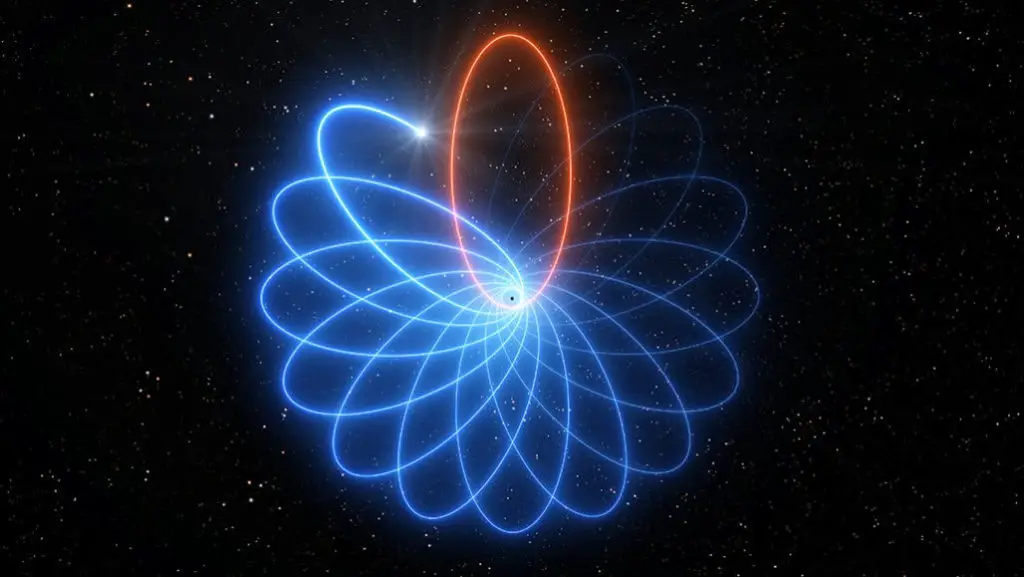
With such a large mass, the orbits of the stars surrounding Sagittarius A took on a Schwarzschild precession, where the overall orbit is shaped like a rosette as opposed to a simple, static eclipse. This was determined by scientists using the star S2, at which the rotation of the ellipse orbit was confirmed to be the result of the warping of spacetime caused by massive objects (black hole).
9. Solar Sailing
Solar sailing is a new method of propelling a spacecraft through space by use of large reflective sails that capture the momentum of light from the sun to push the spacecraft forward.
There has only been two missions that successfully utilized solar sailing:
IKAROS (Interplanetary Kite-craft Accelerated by Radiation Of the Sun) was the Japanese spacecraft, the first in the world to successfully demonstrate solar sailing. Launched in 2010, it showed how the accumulated energy from individual light photons can over time, push a solar sail and anything attached to it forward. The mission of the spacecraft was expected not only to go to Venus the Akatsuki (“Dawn”) orbiter but also take off on its own for a three-year trip around the other side of the sun. (Space)
Unlike IKAROS, the LightSail 2 was a crowdfunded spacecraft from The Planetary Society that was meant to demonstrate solar sailing as a viable means of propulsion for the CubeSats – a small, standardized spacecraft that was part of the global effort to lower the cost of space exploration. (The Planetary Society)
This was the first spacecraft to be propelled by solar sailing in Earth orbit, and the second spacecraft to use solar sailing after IKAROS.
Seven days after launch aboard the SpaceX Falcon Heavy Rocket, LightSail 2 ejected, which after a few days of monitoring, on 23 July 2019, deployed its 32-square-meter solar sails. The mission was considered a success after confirmation that LightSail 2 raised its orbital high point (apogee) around Earth by 2 kilometers. (The Planetary Society)
10. Discovery of Ice on Mars
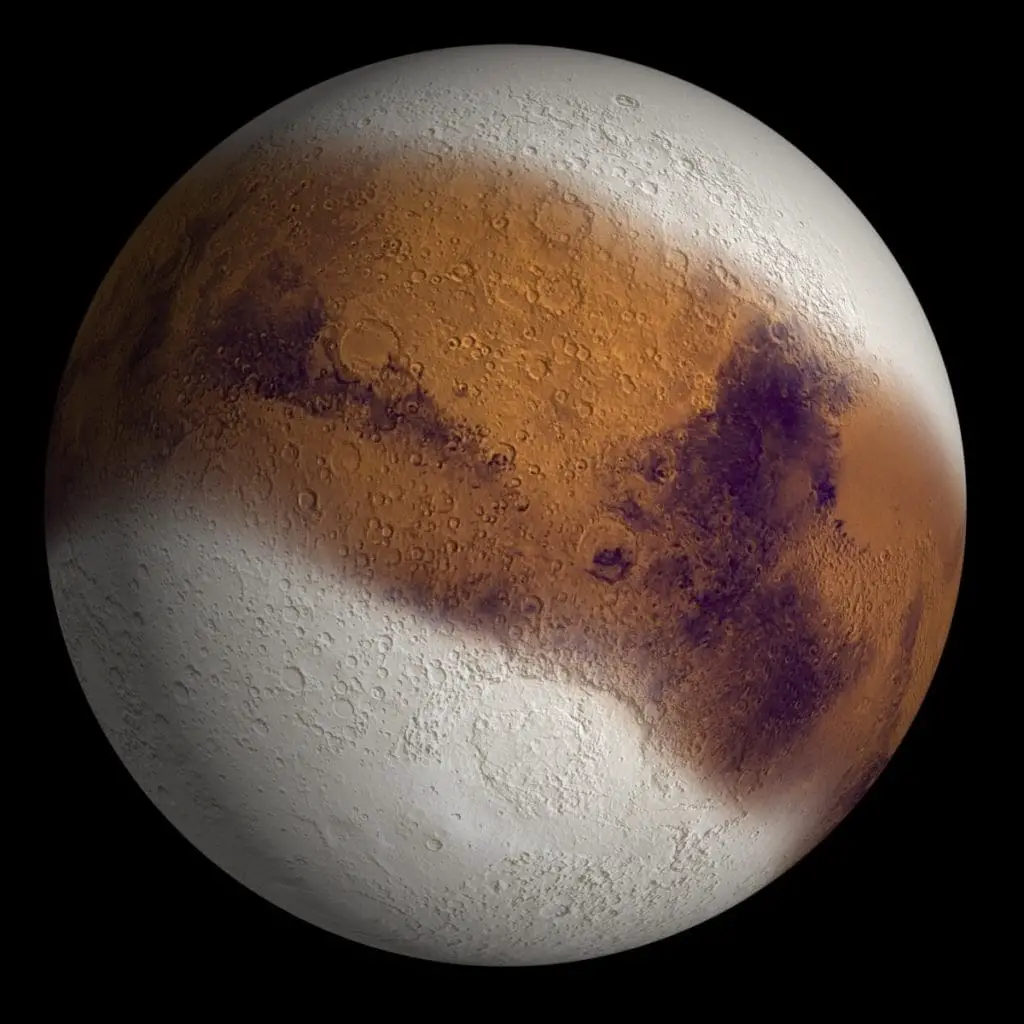
Image by NASA/JPL/Brown University
The Mariner 9 imaging from Mars on 14 November 1917 revealed the first direct evidence of water in the form of riverbeds, canyons, water erosion, deposition, weather fronts, fogs, etc. It was not until July 2003 when it was announced the Gamma-Ray Spectrometer (GRS) aboard the Mars Odyssey discovered huge amounts of water over vast areas of Mars. This included a high density of ice just under the surface at 55 degrees latitude to the poles in both hemispheres.
Although, due to the low absolute humidity of the Martian atmosphere and low temperature, the paper on the Stability and Exchange of Subsurface Ice on Mars (4) provided two possible views of subsurface water/ice.
First, the atmosphere will have no contact with the subsurface ice buried under the impermeable layer of dry material. Such low diffusivities would isolate the subsurface ice from any changes in atmospheric conditions.
Second, the subsurface ice will be free to exchange vapor with the present Martian atmosphere, and it is protected by a dry layer of regolith (unfragmented bedrock) only from large temperature changes.
Ultimately, the interaction between the Martian atmosphere and subsurface ice will decide how humanity might approach setting up a base on this red planet in the year 2024 and on. But no matter which way it goes, the existence of water gives hope that maybe one day Mars could become inhabited by humans.
References
- Seager, S., & Deming, D. (2010). Exoplanet Atmospheres. Annual Review of Astronomy and Astrophysics, 48(1), 631–672. https://doi.org/10.1146/annurev-astro-081309-130837
- Seager, S. (2013). Exoplanet Habitability. Science, 340(6132), 577–581. https://doi.org/10.1126/science.1232226
- Pappalardo, R. T., Belton, M. J. S., Breneman, H. H., Carr, M. H., Chapman, C. R., Collins, G. C., Denk, T., Fagents, S., Geissler, P. E., Giese, B., Greeley, R., Greenberg, R., Head, J. W., Helfenstein, P., Hoppa, G., Kadel, S. D., Klaasen, K. P., Klemaszewski, J. E., Magee, K., … Williams, K. K. (1999). Does Europa have a subsurface ocean? Evaluation of the geological evidence. Journal of Geophysical Research: Planets, 104(E10), 24015–24055. https://doi.org/10.1029/1998je000628
- Schorghofer, N. (2005). Stability and exchange of subsurface ice on Mars. Journal of Geophysical Research, 110(E5), 1–5. https://doi.org/10.1029/2004je002350
